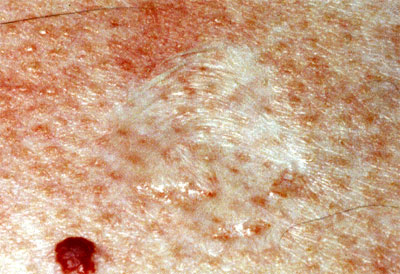|
|
|
Pemphigus vulgaris
Pemphigus vulgaris is a blistering disorder secondary to immunoglobulin mediated destruction of the intercellular bridges between keratinocytes within the epidermis.
Blisters can develop over the entire body surface, including mucous membranes. Blisters are characterized typically as being flaccid, and can rapidly evolve into large areas of erythematous erosions. Pressure on a blister results in extension, the Nikolsky sign.
Pemphigus vulgaris is a potentially fatal disease, because of the large areas of denuded skin.
Treatment:
- Treatment with immunosuppressives is standard therapy. Prednisone 100-150 mg/day, in addition other immunosuppressives may be needed. The prednisone dosage is dropped as rapidly as possible once the other immunosuppressive begins to have an effect, typically 2- 3 months after starting treatment.
- Immunosuppressives include cyclophosphamide, azathioprine and methotrexate.
- Topical steroids such as clobetasol 0.05% cream can be useful adjuvant therapy.
- Any evidence of infection should, after culture, be treated aggressively with the appropriate antibiotic.
- Mycophenolate mofetil is a safe and often effective therapy

Back to Dermatology Glossary - P Index |
Back to Dermatology Glossary Index
|